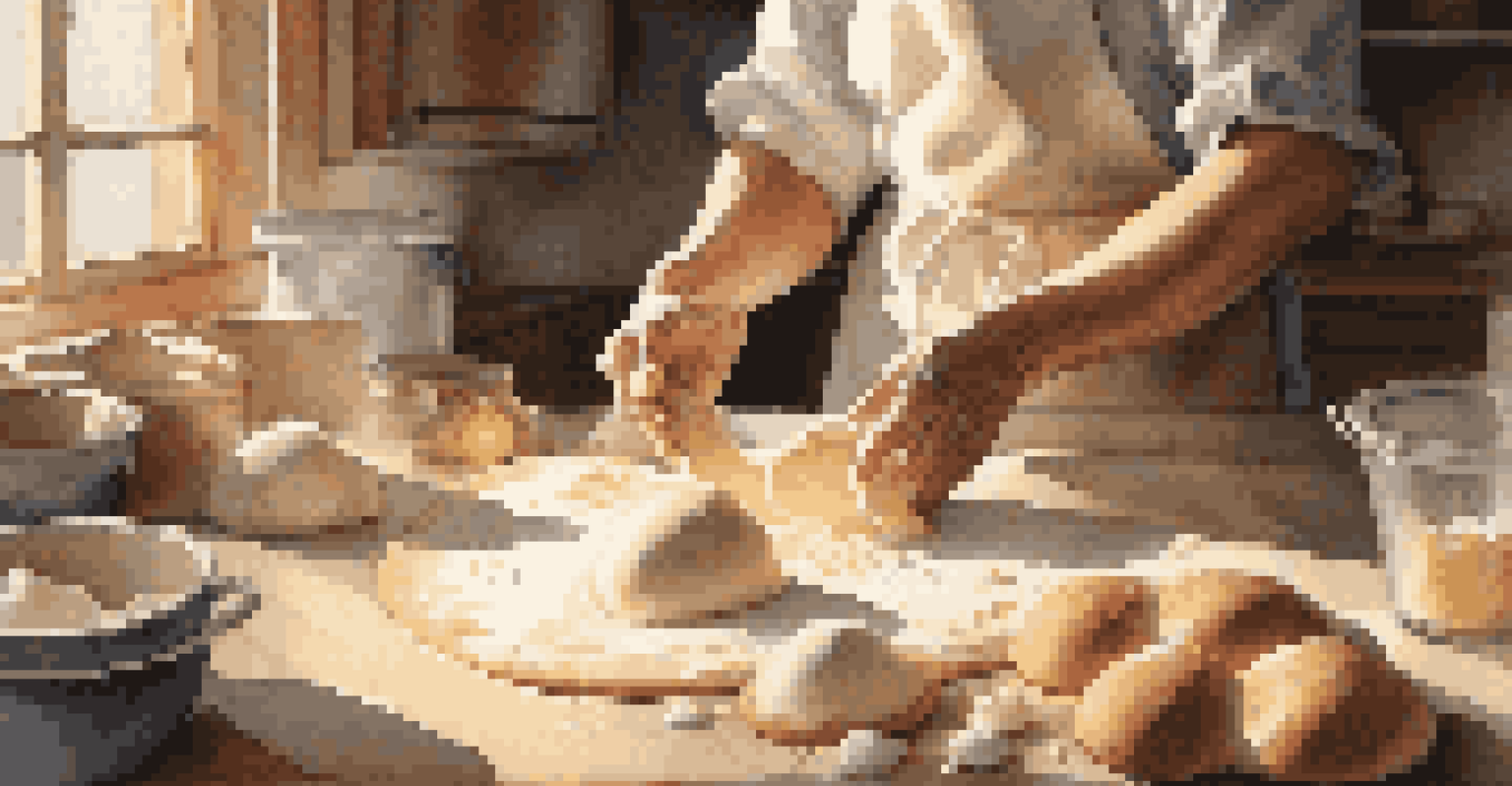The Role of Sugar in Pastry Making: Sweetness and Texture

The Sweet Foundation: Why Sugar Matters
Sugar isn't just for sweetness; it's a foundational ingredient in pastry making. It plays a crucial role in balancing flavors, making desserts delightful and appealing. Without sugar, pastries would lack that essential taste that makes them irresistible.
Sugar is a preservative. It makes food taste better and it keeps it fresh. It's a vital ingredient in cooking, especially when it comes to baking pastries.
Moreover, sugar enhances the overall flavor profile of a pastry. It can coax out the natural flavors of other ingredients like chocolate, fruits, or spices, creating a harmonious blend. This is why you often see recipes that call for specific amounts of sugar, tailored to highlight the main flavors.
In essence, sugar serves as the sweet backbone of any pastry. It creates a sensory experience that draws people in, making pastries not just food but a treat for the senses.
Texture Transformation: The Role of Sugar
Sugar does more than just add sweetness; it significantly impacts the texture of pastries. When sugar is combined with fat, it creates a creaming effect, which is essential for light and fluffy baked goods. This process introduces air into the mixture, leading to a tender crumb.

Additionally, sugar contributes to the structure of pastries. For instance, in cookies, sugar helps to create a chewy texture by retaining moisture. This interplay between sugar and other ingredients is what gives each pastry its unique mouthfeel.
So, whether you're whipping up a delicate meringue or a rich buttercream, sugar is the unsung hero that helps achieve that perfect texture. It’s a balancing act that transforms simple ingredients into something extraordinary.
Browning Beauty: Sugar's Role in Color
One of the more visual aspects of sugar in pastries is its ability to promote browning. Through a process called caramelization, sugar transforms when heated, leading to that beautiful golden color we associate with baked goods. This not only enhances the appearance but also adds depth of flavor.
Baking is both an art and a science. Sugar is essential to achieving the perfect balance of flavor, texture, and appearance in pastries.
The Maillard reaction, which occurs between sugars and proteins, also contributes to the browning effect in pastries. This reaction creates complex flavors and aromas, making pastries not just tasty but also inviting to the senses.
In short, sugar is responsible for that appealing golden crust on your favorite pastries. It’s a visual cue that signals deliciousness and often indicates a well-baked treat.
Moisture Retention: Keeping Pastries Fresh
One of sugar's lesser-known roles is its ability to retain moisture in baked goods. This property is vital for keeping pastries fresh and enjoyable over time. Sugar binds to water, slowing down the staling process and ensuring that your pastries remain soft and moist.
For example, cakes that contain sugar tend to stay fresh longer than those without. This is particularly important in pastries that are meant to be enjoyed over a few days, like layer cakes or muffins.
By incorporating the right amount of sugar, bakers can achieve pastries that not only taste great but also last longer. It’s a simple yet effective way to enhance the overall quality of baked goods.
Balancing Act: Sugar in Different Pastry Types
Different types of pastries require varying amounts of sugar, showcasing its versatility. For instance, a rich chocolate cake might call for a generous amount of sugar to balance the bitterness of cocoa, while a fruit tart may require just enough sweetness to complement the natural sugars in the fruit.
This balancing act is essential for achieving the desired flavor and texture in each pastry. Bakers often experiment with sugar levels to find that perfect harmony, adjusting according to the recipe and personal taste.
Ultimately, understanding how sugar interacts with other ingredients allows bakers to create tailored pastries that cater to diverse palates. It’s all about striking the right balance for each unique creation.
Alternative Sweeteners: Exploring Options
With the rise of health-conscious baking, many are turning to alternative sweeteners. Options like honey, maple syrup, or even stevia can replace traditional sugar, but they behave differently in recipes. Understanding these alternatives is key for bakers looking to reduce sugar without sacrificing quality.
For example, honey adds moisture but can also alter the texture and browning of a pastry. Similarly, stevia is much sweeter than sugar, so it requires careful adjustments to achieve the desired sweetness without overwhelming other flavors.
Exploring these alternatives opens up a world of possibilities in pastry making. While sugar is a classic choice, experimenting with different sweeteners can lead to exciting new creations that cater to various dietary needs.
The Art of Sugar: A Baker's Secret Ingredient
At the end of the day, sugar is an integral part of pastry making, blending sweetness with artistry. It’s a multi-faceted ingredient that influences flavor, texture, and even appearance. Bakers who understand sugar's roles can elevate their pastries from ordinary to extraordinary.
Think of sugar as a painter’s brush, adding strokes of sweetness and depth to the canvas of pastry. Each pastry tells a story, and sugar is a vital character in that narrative, creating a delightful experience for those who indulge.

So next time you savor a pastry, take a moment to appreciate the essential role sugar plays. It’s not just about sweetness; it’s about crafting a beautiful, delicious experience that delights the senses.